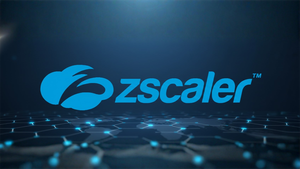Price transparency, market inefficiencies, and fragmentation remain critical structural barriers to scale
Carbon credit registry reform is the most important facilitator of growth
NEW YORK, March 27, 2024 (GLOBE NEWSWIRE) -- Nasdaq (Nasdaq: NDAQ) today published the results of a global survey examining the voluntary carbon market (VCM) ecosystem, with responses from over 130 decision-makers across project owners, financial investors, commercial banks, brokers, and market operators, produced in partnership with the ValueExchange.
The survey reveals that the market for voluntary carbon credits is growing and attracting more diverse participants, but price transparency, market inefficiencies and fragmentation are preventing scale. Carbon credit registries are seen as having the power to address many of these challenges and unlock the potential of the industry.
Roland Chai, Executive Vice President and Head of European Market Services, at Nasdaq said: “Global carbon markets are at a critical juncture. Truly scalable, trusted carbon markets can have a profound and lasting impact; the question is how we get there. By identifying the structural inefficiencies holding the market back, we can propose long-term solutions and help build global consensus. Addressing these barriers to scale can only come from a coordinated push from policymakers, market infrastructure providers, and participants across the financial services ecosystem.”
Demand for carbons credits is being constrained
Demand for carbon credits arises from a broad range of players and objectives: 67% of corporates are driven by their ESG priorities, 50% of commercial banks purchase credits to decarbonize their investment portfolio, and 45% of investors are primarily seeking a financial return. There is also a clear desire for companies to expand their activity with more than half of corporates expressing a desire to double their exposure to the asset class.
However, despite the diversified demand for carbon credits, current market structures are stifling demand as well as the broader evolution of the market. Challenges in issuance, verification, trading, reporting, and retirement processes prevent 18% of all survey respondents from participating in today's voluntary carbon markets. A further 11% saw their volumes capped at less than half of their targets due to the same issues, with 40% constrained by at least a quarter.
Price transparency, inefficiencies, and market fragmentation
Nearly one-third (30%) of all respondents had low confidence in the pricing of carbon assets, leaving them unable to efficiently discover price or benchmark credits on the demand side. A lack of pricing transparency prevents brokers from trading and investors from holding the asset, leaving volumes capped at an artificially low level. This rate of low confidence rises to 66% in commercial banks, which constrains supply because financiers can’t accurately model risk or efficiently deploy capital.
The overall structure of voluntary carbon markets is characterized by inconsistency across credit types, with a heavy reliance on manual interactions and onerous data collection tools. This lack of standardization not only hampers trading but also limits the accessibility of local markets to foreign investors. The persistent need to perform manual due diligence and pricing for individual projects remains a significant barrier to scale: For example, 63% of respondents handled project listings via phone and email, but 79% would ideally like to manage such activities through a registry platform. Higher costs stemming from non-standardization and manual methods will inevitably drive commercial banks, corporates, and investors to seek out larger deals, cutting out smaller project owners, leading to decreased deal volumes and bottlenecked financing.
These challenges are further compounded by widespread fragmentation. Almost half of survey respondents across project owners, financiers, intermediaries, and investors are forced to interact with four or more registries. With little to no standardization or interoperability, this market inefficiency and fragmentation forces small “puddles of liquidity"—each isolated, devoid of scale, and requiring entirely bespoke, manual resources to interact.
How global carbon markets can achieve scale
A clear and proven source of transparency for all securities is exchange trading, which is the preferred market model for 58% of all respondents. Positively, pioneering exchange venues are receiving extensive support from governments, regulatory authorities, and banks, addressing some market constraints. However, much more work is needed to address post trade infrastructure.
Two-thirds of respondents (66%) see registries as the most important facilitator to improving markets and leading change. As the guarantors of quality in the voluntary carbon markets, registries have two core levers to drive confidence. The first is their traditional strength of project verification and methodology, where evolution continues. And second, as the key enabler of buyer confidence, is their ability to drive standardization in the products that they hold, in the data that describes them, and in the availability of that data across multiple platforms.
Through standardization they can enable automation and connectivity, which accelerates due diligence, increases price transparency, and reduces transaction costs. In doing so they can address the fundamental confidence issues that undermine the industry today and help to put the world’s voluntary carbon markets on a scalable growth path.
Magnus Haglind, Senior Vice President and Head of Marketplace Technology, at Nasdaq said: “Without a credible foundation for building trust, liquidity, and connectivity across voluntary carbon markets, they cannot scale. We must evolve the structure of the market, drawing on the institutional knowledge and framework of other global asset classes, to establish an institutional ecosystem around carbon credits. Registries lie at the heart of the solution, with the ability to embrace new technologies, set internationally consistent standards, and accelerate the market’s growth trajectory.
About Nasdaq
Nasdaq (Nasdaq: NDAQ) is a leading global technology company serving corporate clients, investment managers, banks, brokers, and exchange operators as they navigate and interact with the global capital markets and the broader financial system. We aspire to deliver world-leading platforms that improve the liquidity, transparency, and integrity of the global economy. Our diverse offering of data, analytics, software, exchange capabilities, and client-centric services enables clients to optimize and execute their business vision with confidence. To learn more about the company, technology solutions, and career opportunities, visit us on LinkedIn, on X @Nasdaq, or at www.nasdaq.com.
Nasdaq Media Contact:
Andrew Hughes
+44 (0)7443 100896
Andrew.Hughes@nasdaq.com
-NDAQG-






